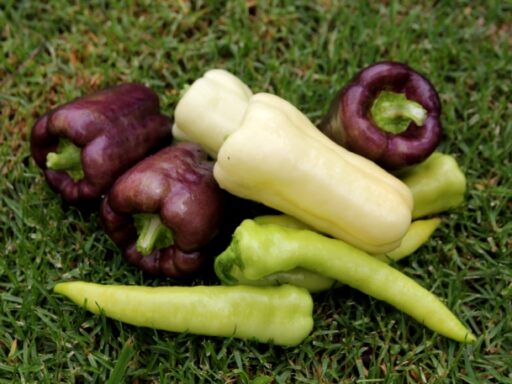Introduction to Monarda Plant
Bee Balm, scientifically known as Monarda, is a perennial favorite among gardeners due to its vibrant flowers and aromatic leaves, which attract a plethora of pollinators like bees, butterflies, and hummingbirds. Whether you’re looking to add a splash of color to your garden or cultivate a plant with practical benefits, the Monarda plant is an excellent choice. This guide will walk you through everything you need to know about planting, growing, and caring for Monarda, highlighting the incredible advantages of incorporating this plant into your garden.

Why Plant Monarda?
Monarda plants are not only visually appealing but also possess a variety of benefits that make them a valuable addition to any garden:
- Attracts Pollinators: Bee Balm is renowned for its ability to attract bees and butterflies, aiding in the pollination of your garden.
- Medicinal Properties: The plant has been used traditionally for its antiseptic properties and can help in treating minor wounds and infections.
- Aromatic Foliage: Monarda leaves can be used to make tea, which is believed to relieve digestive problems and nausea.
How to Plant Monarda
- Choosing a Site:
- Sunlight: Monarda thrives in full sun but can tolerate partial shade.
- Soil: Opt for well-draining soil rich in organic matter. Monarda prefers a slightly acidic to neutral pH.
- Planting Time: The best time to plant Bee Balm is in the spring after the threat of frost has passed. Additionally, Sow 7-9 weeks before planting out. For direct seed – Cover seed lightly. See some more helpful tips from Johnny Seeds.
- Spacing: Plant Monarda plants about 18 to 24 inches apart to allow for ample air circulation, which helps prevent powdery mildew.
How to Grow Monarda
- Watering: Keep the soil consistently moist, but not waterlogged. Water at the base of the plant to avoid wetting the foliage, which can lead to fungal diseases.
- Mulching: Apply a layer of mulch around the plants to help retain soil moisture and suppress weeds.
- Fertilizing: Feed your Monarda with a balanced, slow-release fertilizer in early spring, or use organic compost to enrich the soil.

How to Care for Monarda
- Pruning: Deadhead spent flowers to promote further blooming. In late fall, cut back the stems to a few inches above the ground to prepare the plant for winter.
- Disease Management: Monarda is susceptible to powdery mildew. Ensure good air circulation, avoid overhead watering, and consider using fungicidal sprays if necessary.
- Division: Monarda plants should be divided every 3 to 4 years to prevent overcrowding and rejuvenate the plant. This is best done in early spring.
Varieties of Monarda to Consider
Monarda species come in a variety of forms, each with its own unique characteristics and benefits. When selecting a Monarda variety for your garden, consider the following popular types, each renowned for their distinctive colors and growth habits:
- Monarda didyma (Scarlet Bee Balm):
- Description: This variety is famous for its bright red flowers and is often considered the most striking of the Bee Balm species.
- Height: Grows up to 3 to 4 feet tall.
- Benefits: Its vibrant red blooms are highly attractive to hummingbirds and butterflies.
- Monarda fistulosa (Wild Bergamot):
- Description: Known for its lavender-pink flowers, Wild Bergamot is native to much of North America and is often used in native plant gardens.
- Height: Typically reaches 2 to 4 feet in height.
- Benefits: It has a more drought-tolerant nature than its cousins and offers a strong, pleasant aroma which is great for teas.
- Monarda punctata (Spotted Bee Balm):
- Description: This variety stands out with its yellowish, purple-spotted flowers and a more sprawling habit.
- Height: Generally grows 1 to 3 feet tall.
- Benefits: Spotted Bee Balm is particularly noted for its unique appearance and medicinal properties.
- Monarda ‘Jacob Cline’:
- Description: A cultivar of Monarda didyma, ‘Jacob Cline’ is admired for its large, bright red flowers and robust growth.
- Height: Can grow up to 4 feet tall.
- Benefits: It is highly mildew resistant, making it a preferred choice for gardeners struggling with humidity and fungal issues.
- Monarda ‘Raspberry Wine’:
- Description: This cultivar produces beautiful wine-red flowers that bloom prolifically through the summer months.
- Height: Reaches about 2.5 to 3 feet in height.
- Benefits: Its deep red flowers attract a variety of pollinators, and it exhibits good resistance to powdery mildew.
Choosing the Right Variety
When choosing a Monarda variety, consider your local climate, soil conditions, and the specific needs of your garden space. Some varieties may be more suited to dry conditions, while others thrive in more moist environments. Additionally, the height and spread of different Monarda varieties can impact how they fit within your garden design.

Troubleshooting Common Issues
- Powdery Mildew: Appears as a white powdery deposit on the leaves. Improve air circulation and reduce humidity to manage this issue.
- Rust: This fungal disease causes orange or brown spots on leaves. Remove affected leaves and apply a fungicide approved for rust control.
The Bottom Line
Growing Monarda plants can be a rewarding experience due to their colorful blooms and beneficial properties. By following these guidelines, you can enjoy a healthy and vibrant Bee Balm display in your garden, enhancing both its beauty and biodiversity.
With the right care, your Monarda plants will thrive and bloom year after year, offering not only aesthetic appeal but also a habitat for beneficial wildlife and a range of medicinal uses. Whether you’re a seasoned gardener or a novice, Monarda is a plant that can bring life and color to any outdoor space.
Would you like more information on specific aspects of Monarda care, or are you ready to get planting? Remember, the perfect garden starts with a solid plan. Try our garden planning service, PLAN MY GARDEN. Simply enter your zipcode, describe your garden layout and what you want to grow, and we will send you custom PDF plans within 24 hours for only $39. Start planning your dream garden today!
FAQ on Monarda Plant
Monarda, also known as Bee Balm, is a perennial plant known for its vibrant flowers and aromatic leaves, which attract pollinators like bees, butterflies, and hummingbirds.
The best time to plant Monarda is in the spring after the last frost or in early fall to allow the plant to establish before winter.
Monarda plants thrive in full sun but can tolerate partial shade.
Monarda prefers well-draining soil that is rich in organic matter with a slightly acidic to neutral pH.
Water Monarda plants to keep the soil consistently moist but not waterlogged, particularly during dry periods.
Ensure good air circulation around Monarda plants, avoid overhead watering, and consider using organic fungicidal treatments if necessary.
Yes, Monarda leaves can be used to make herbal tea, and they possess antiseptic properties that can help treat minor wounds and infections.
Yes, Monarda plants should be divided every 3 to 4 years to maintain vigor and prevent overcrowding.
Monarda attracts pollinators, helps in pollination of the garden, and has medicinal properties. It also adds vibrant color and fragrance to garden spaces.
The Monarda ‘Jacob Cline’ variety is known for its resistance to powdery mildew, making it a good choice for humid climates.






